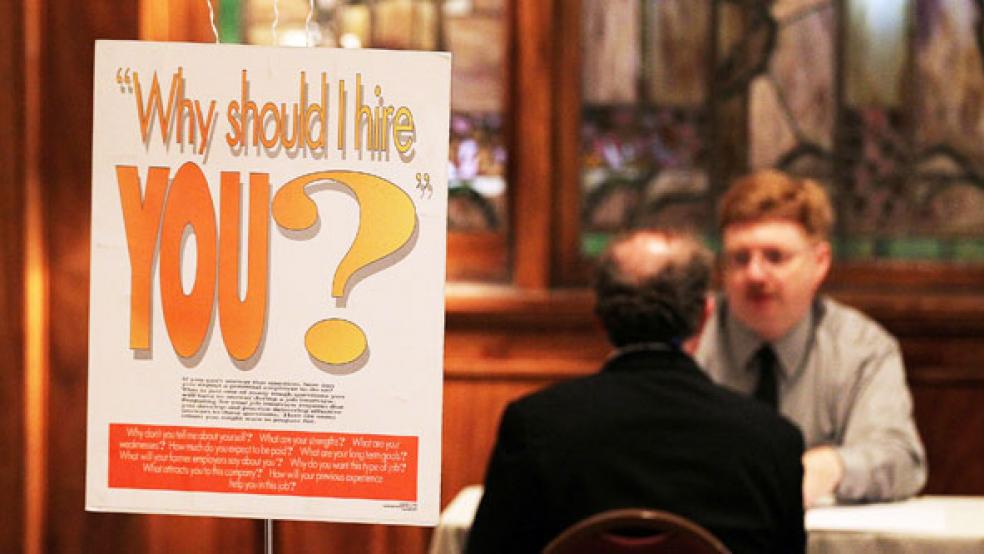Economic growth in the first half of the year slowed to a crawl, the Commerce Department reported Friday, suggesting there will be few new jobs prospects for the nation’s unemployed in the months ahead and renewing fears of a double-dip recession.
Real gross domestic product, the broadest measure of the nation’s output of goods and services, rose at just a 1.3 percent annual rate in the second quarter, far below the 1.8 percent rate economists were expecting. The Bureau of Economic Analysis also sharply lowered its estimate of first-quarter growth, from 1.9 percent to 0.4 percent.
Growth during the first half of 2011 was at the slowest pace since the end of the recession in 2009.
The latest economic news increases the likelihood that next year’s election battle will take place amid a sputtering economy marred by high unemployment. Job growth tends to lag economic performance – companies add jobs only after sales have been surging ahead for some time and demand has exceeded the new output achieved through productivity gains.
“Unemployment could rise in the second half of the year,” says Asha Bangalore, a senior economist at Northern Trust Bank in Chicago. “The first half was severely below potential.”
While there was economic weakness across the board, the political shift in the economic debate in Washington from economic stimulus to fiscal austerity has clearly begun to show up in the numbers. State and local government spending has been contracting for over a year, and the federal government since the first of the year has now joined in the budget-cutting fever.
While federal spending rose in the second quarter compared with the first, its spending was 1.9 percent less than a year ago, according to the Commerce Department. Its revised first-quarter spending numbers showed federal spending was 0.3 percent less than the first quarter of 2010.
"With a fiscal consolidation on the way, it is hard to see the economy getting much stronger. If the debt ceiling is not raised by the end of Tuesday, we could well have another recession on our hands," Paul Dales, a senior economist at Capitol Economics, wrote in a research note reported in The Washington Post.
The sobering GDP report is certain to have an impact on the deliberations of the Federal Reserve Board’s Open Market Committee, which reconvenes August 9. “The Fed may have to consider easing,” Bangalore said.
The Fed’s so-called quantitative easing policy–by which it buys government debt on the open market–expired at the end of June. With interest rates already near zero, stepping up purchases in the government bond market remains one of the few policy tools left in the Fed’s toolkit as it pursues its twin mandates of maintaining high employment while keeping inflation in check.
Consumers’ willingness to spend appears to be flagging in the face of uncertain job prospects–and perhaps by the unsettled political situation in the country. Personal consumption grew by just 0.1 percent in the second quarter, compared with an increase of 2.1 percent in the first three months of the year. Meanwhile, the personal savings rate edged up to 5.1 percent from 4.9 percent in the first quarter, even though the level of income growth–0.7 percent–remained the same.
The rising savings rate was immediately felt in by durable goods manufacturers. Purchases for longer-lasting products like refrigerators and furniture fell 4.4 percent in the second quarter over the earlier period. Nondurable goods purchases–food, paper, drugs, for instance–rose just 0.1 percent compared with an increase of 1.6 percent in the first quarter.
Reduced consumer spending also showed in the decline in the rate at which imports grew–from 8.3 percent in the first quarter to 1.3 percent in the second quarter. While that pushes up GDP growth since imports are a subtraction from economy activity, it was just one more sign that traffic at the mall was weak during the second quarter.
At least some of the factors weighing down the economy should begin to fade in the second half. Automobile output subtracted 0.12 percentage points from economic growth, largely due to supply disruptions caused by the Japanese earthquake and tsunami. Auto production had grown by more than 1 percent in the first quarter, and a return to that level of growth in the second half of the year could provide some relief for jobless workers in hard-hit Midwestern states.
And in a possible sign that the troubled real estate industry may finally be hitting bottom, residential fixed investment (new homes and apartments primarily) increased 3.8 percent in the second quarter compared to a decline of 2.4 percent in the first quarter. Commercial and industrial fixed investment also rose sharply–6.3 percent–compared with an increase of just 2.1 percent in the first quarter.





